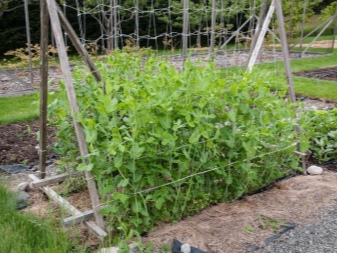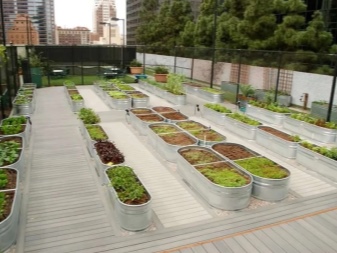What to plant in the country?

When decorating their site, summer residents usually try to plant unpretentious plants there that need minimal care. In order to arrange beautiful flower beds and beds in a small area, it is worthwhile to draw up a planting plan in advance and choose the most suitable places for all crops.


The best plants to plant in front of the house
Beautiful front gardens in front of the house can transform even a small unsightly area. For planting in your flower bed, you should select plants with different flowering periods. So the area next to the house will look beautiful at any time of the year.
- Primroses... In order to admire your flower bed already in the first days of spring, it is worth planting tulips, daffodils, crocuses, blueberries and hazel grouses there. Such plants do not bloom for long, but for several weeks they become a real decoration of the flower bed.



- Spring perennials. So that even after the end of their flowering, the site still looks beautiful, unpretentious perennial plants can be placed against their background: ferns, primroses, phlox.


- Summer flowers... The choice of plants that bloom in the summer is huge. Therefore, you can select them, focusing only on your preferences. For a summer residence, it is best to choose perennials. In this case, you will need to take care of the site much less. Asters can be attributed to unassuming plants. To add colors to the site, it is worth planting several different varieties at once.

- Autumn plants... In the first month of autumn, the flower bed still looks bright due to the summer flowers. But for the cold weather, it is worth planting autumn crocuses, chrysanthemums, anemones on your site. Decorate the flowerbed and ornamental cabbage. She looks great until the first frost.



If there is free space in the summer cottage, lawns should be laid out in front of the house. You can buy a special blend at any gardening store. It is best to choose a meadow, Moorish or clover lawn. They grow quickly and do not need additional care.

What to plant near the fence and paths?
Plants planted next to the fence will also help to decorate the territory of the garden plot.
- Trees... Only those plants that grow normally in the shade should be planted next to the fence. They need to be located at a distance of about three meters from the fence. Many summer residents decide to plant cherries, peaches or apple trees near the fence. You can also plant a chestnut, mountain ash or birch near the fence. They are quite unpretentious to care for and look beautiful. The main thing is not to forget to regularly thin out the crown of the tree and shorten its branches.



- Ornamental shrubs. On the sunny side of the site, it is worth planting park varieties of roses or jasmine. In spring and summer, they delight the eye with their flowers, and in winter and autumn they hide the area from prying eyes. For cold regions, Amur lilac is well suited, which is distinguished by its special endurance.


- Fruit shrubs. In 1-2 meters from the fence, you can plant barberry bushes or hazel. You can also place raspberries there. It is best to plant it in two rows. And so that the bushes do not grow much, you can sow sorrel next to the raspberry tree.


A transparent fence can be decorated with climbing plants to hide your area from prying eyes. You can use different plants to create a hedge. Most often, ivy or wild-growing grapes are chosen for this purpose.Such plants do not need to be looked after - they grow by themselves. All that remains to be done by the owners of the site is to cut off excess branches and form a neat hedge.


Also, gardeners should pay attention to flowering vines. For this purpose, long-term wisteria is best suited. But it is worth growing it only if the fence is quite strong. A dilapidated fence under the weight of branches can break. Honeysuckle will also look beautiful on a hedge. It is unpretentious to care for and tolerates frosty winters well.


From the outside of the fence, you can land ornamental shrubs and beautiful annuals.
Plants should not grow too close to each other. It is also important that they stay out of the road.
Plants planted along the paths will also help to decorate the site. There are several ways to design a site. Along the edges of the paths, you can create curbs or ridges of perennial or annual plants. Also next to them are small ribbon flower beds. Looks nice next to the edges of the track low borders of boxwood or undersized thuja. In addition, creeping plants can also be planted there.



What to plant in the beds?
In the country garden, it is worth planting plants that need a minimum of care.
- Potato... This is one of the most popular crops, which will definitely find a place even in a small area. The plant does not need regular watering and additional care. Potatoes need to be weeded from time to time and weeds removed from the rows. The "Aurora" variety is best suited for planting in the country. Such varieties as "Vitalot", "White Rose", "Blue Danube" are distinguished by their resistance to weather conditions and excellent taste.


- Zucchini... This culture is also not particularly capricious in its care. In addition, it is worth noting that only a few zucchini bushes can be planted in the country. This will be enough to delight yourself and your loved ones with delicious dishes in the summer. The first crop appears within a month after planting.


- Ground tomatoes. For your summer cottage, it is best to choose plants that are genetically adapted to drought. They have deep roots and can extract enough moisture and nutrients for themselves. Therefore, they may well do without regular watering.

- Cabbage... Only cabbage seedlings require special care. But after transplanting to open beds, it may well grow unattended. To prevent weeds from clogging the cabbage, the seedlings should be placed at a distance of 40-50 centimeters from each other. A layer of mulch under the bushes will help keep moisture in the soil.


- Peas and green beans... Both cultures are completely unpretentious and do not require additional maintenance. They can be planted in both lighted and shaded areas. The first shoots appear on the site after 2-3 weeks.


Slightly more whimsical are plants such as onions, carrots, eggplant, radishes and turnips. There will also be benefits from scented herbs planted in the beds. The site can be grown mint, basil, dill, St. John's wort.
There is also room for salad in the aisles. But it is worth planting it only while relaxing in the country, because the plant needs daily watering.



Owners of small summer cottages should think not only about the choice of plants that should be planted in the beds first, but also about how to place them correctly. There are several ways to grow a good crop in a small area.
- Vertical vegetable garden. Such beds can be made from ordinary polypropylene pipes. Special holes are cut out in them, which are filled with earth. You can grow onions, strawberries, peas in a vertical garden.


- Garden in boxes... High-legged containers of soil can be safely placed in the backyard. They do not take up much space and are well suited for growing plants that need sunlight. Most often, peppers or tomatoes are grown in such boxes.

- Garden beds in containers... Seedlings are planted in metal containers with special supports in early spring. In such conditions, it grows rather quickly.


- Multi-storey vegetable garden... Such pyramids from several tiers are easy to make with your own hands. Sturdy wooden frames, varying in size, are usually used to create. The place for the garden is covered with a layer of dense polyethylene. The soil is poured from above. With such a simple system, more plants can be placed in a small area than in a regular vegetable garden.


- Portable mini-vegetable garden... Greens for the table or any other small plants can be grown in convenient containers that are carried from place to place. You can arrange mini-beds on any site.


What's growing in the shade?
Novice gardeners should find out in advance which plants can grow in the shade. They can be planted next to trees, gazebos or tall shrubs.
- Greens... In conditions of lack of sunlight, you can grow lush and succulent greens. Summer residents should pay attention to mustard leaves, oregano, spinach and sorrel. In the shade, they will not grow so large. But each plant will remain tender and fresh for a long time, without being filled with bitterness over time.

- Vegetables... From shade-loving vegetables, you should choose rhubarb, beets, as well as different types of onions and garlic for your plot. In the shade under cherries or plums, you can grow non-twisting legumes.


- Shade-loving shrubs. In partial shade, plants such as raspberries, black chokeberries and blue honeysuckle feel great. In such conditions, their taste only improves, because in direct sunlight the berries become smaller.



- Ornamental plants. They are usually planted in the shade of a gazebo or pergola. You can decorate the site using plants such as wisteria, kerria, hydrangea, spirea. They feel great in the shade of conifers, for example, under a spruce.



- Berries... Strawberries grow well in a shaded area. Small beds can be arranged next to shrubs. The harvest will be tasty and sweet in the first year after planting the bushes.

- Shade-loving flowers. Calendula, pansies, forget-me-nots grow well in the shade. Also, to decorate the site, you can choose perennials such as periwinkle, irises or lilies of the valley. They do well in the shade under a birch or apple tree. You can plant them around a tree trunk, creating a neat flower bed.



But such light-loving vegetables as peppers, tomatoes and potatoes feel very bad without the sun. Therefore, it is worth allocating a place for them on the sunny side of the site.

What plants should you use to strengthen the slope?
You can decorate and strengthen the slope by planting suitable plants there. They must differ in the following characteristics:
- have a widely branched root system;
- differ in an increased growth rate;
- have a large number of side shoots;
- be unpretentious.



Many types of conifers can be planted on the site. They thrive in damp and damp ground. Also on the site there is a place for rowan, ash or linden. They are suitable for both sandy and clay soil. In addition, they are not afraid of high humidity or drought.


On a steep slope, it is quite possible to plant and perennial herbs... They can even be grown in soil with high groundwater levels. For landing on a slope, you can pick up clover, pachisander, heather, periwinkle. For a swampy area, you should choose calla or sparrow.


By following these simple tips and choosing stable and unpretentious plant varieties, even a novice gardener and gardener will be able to make the most of the free space in their summer cottage and get an excellent harvest.














The comment was sent successfully.